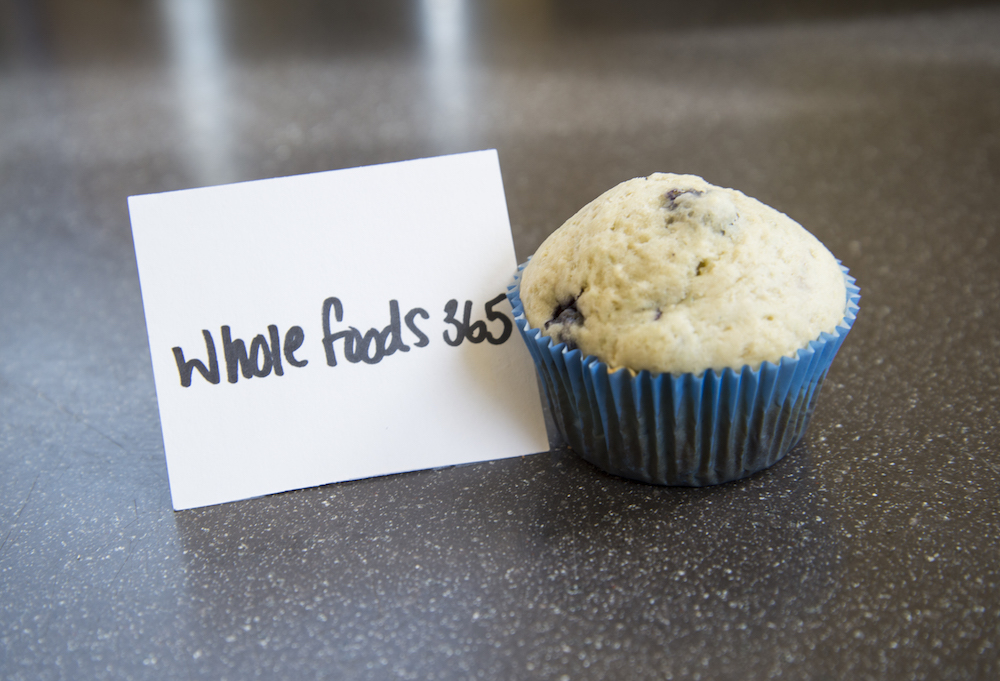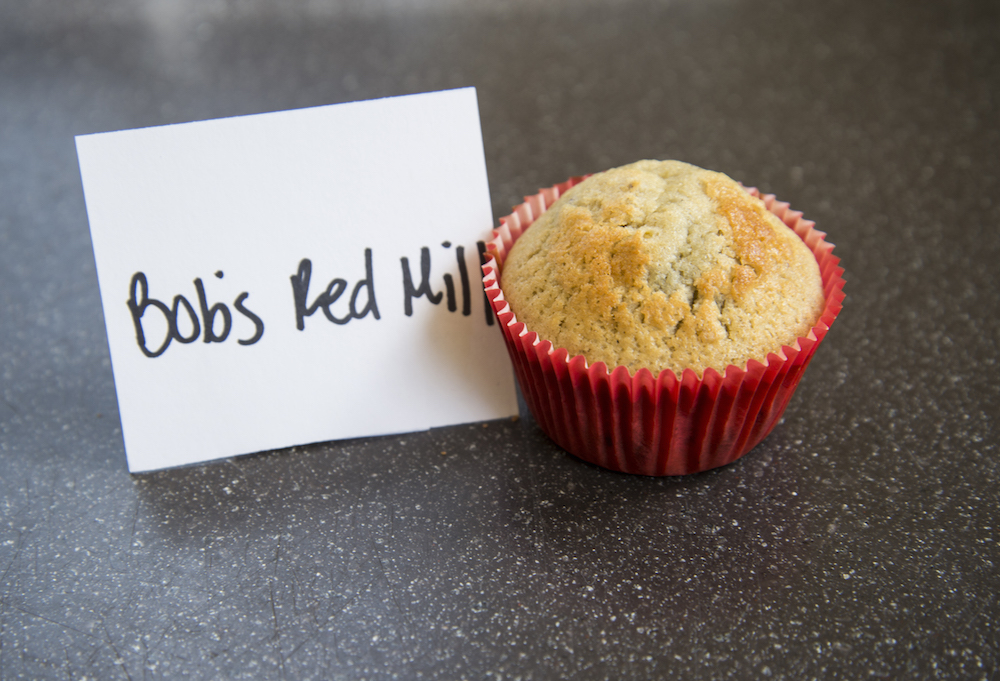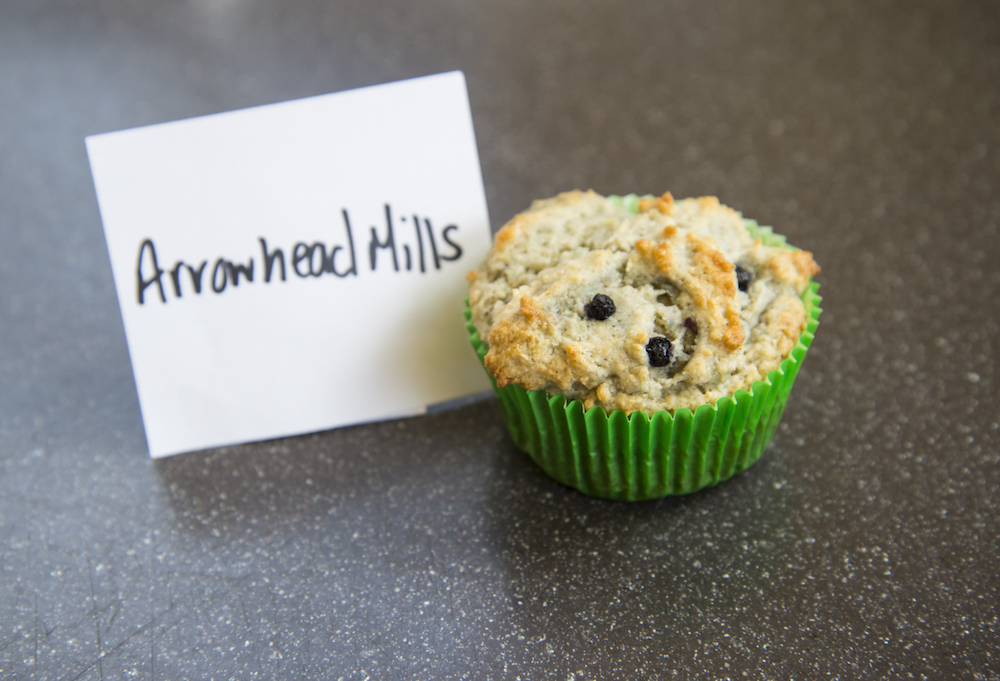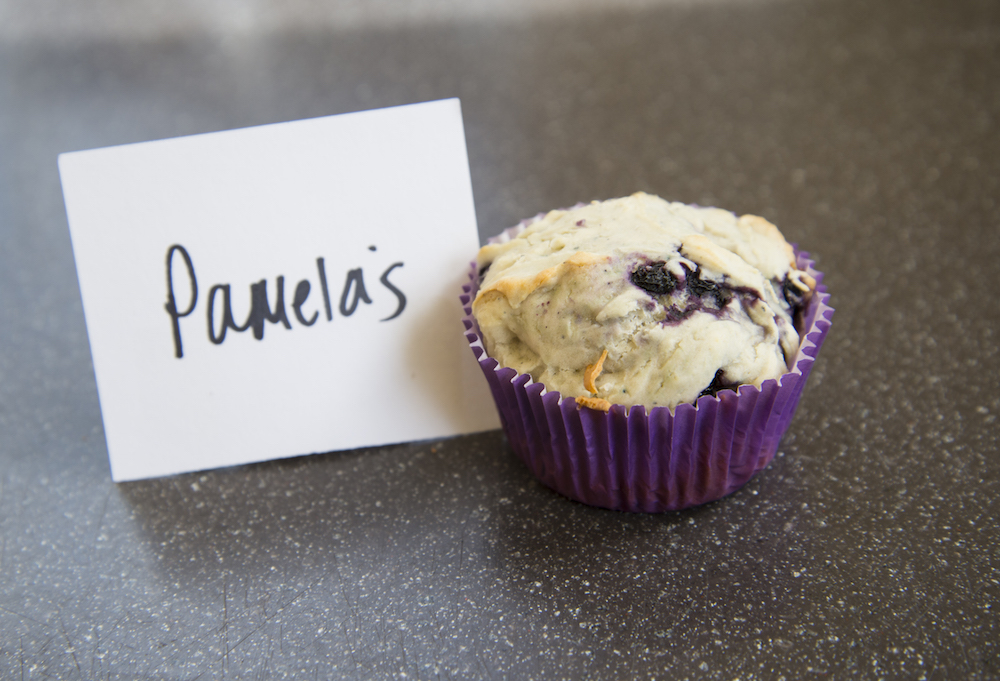If you’ve attempted gluten-free baking, you know the road to that bread, cake or cookie you’ve been craving can be a struggle. Without gluten, these goods are more dry than moist, more grainy than fluffy, and overall less appetizing than when made with gluten-full all-purpose flour.
Gluten-free baking is frustrating—no two flours produce the same results. A simple solution would be to pick up a box of “stop and stir” gluten-free flour mix, but for those who love to bake from scratch, like myself, this simply doesn’t cut it. Gluten-free flour may be finicky, but fear not—the following experiment will settle your baking woes.
To figure out which gluten-free baking flour produces the best baked goods, I scoured the Whole Foods Market flour aisle and decided to put blueberry muffins to the test. Whole Foods Market carries three brands of gluten-free all purpose baking flour: Bob’s Red Mill, Arrowhead Mills, and Pamela’s.
Using the same recipe, I made a batch of blueberry muffins with each one of the gluten-free flours and another with the all-purpose flour to test for texture, taste, and look—4 batches in total. Here’s the recipe we used:
Prep Time: 10 minutes
Baking Time: 20 minutes
Total Time: 30 minutes
Ingredients:
1 cup flour
1/3 cup sugar
Pinch of salt
1 teaspoon baking powder
1 egg
1/2 cup milk
2 tablespoons butter
3/4 cup frozen blueberries
Directions:
1. Melt butter and add to beaten egg and milk.
2. Mix dry ingredients together in a big mixing bowl, then add the egg, milk and butter mixture.
3. Stir with wooden spoon, but be careful not to over-stir.

Photo by Jiani Qu
4. Fold in blueberries.
5. Pour into muffin pan lined with paper holders.

Photo by Jiani Qu
6. Bake at 400 degrees for 20 minutes.
Each batch was tasted by both gluten-free and non-gluten-free testers. Here’s what we found:
Whole Foods 365 All-Purpose Flour
Texture: Dry, slightly dense
Taste: Sweet, but not overpowering
Look: Just like you’d expect a muffin to look
Comments: Surprise, surprise—the control batch of muffins looked and tasted awesome. Only downside? The muffins lacked a crisp, crunchy top. Though muffin-topless, these muffins were proof that gluten leads to the type of muffin we all know and love.

Photo by Jiani Qu
Bob’s Red Mill Gluten-Free Flour
Texture: Granular
Taste: Light flour flavor, evenly sweet
Look: Cupcake-like with a smooth, lightly golden top
Comments: Like the batter, muffins made with Bob’s Red Mill flour were light and grainy. They looked and tasted more like a cupcake than a muffin—not that that’s a problem, exactly—but they just aren’t the type of muffin you’d eat while sipping tea in the morning. If you have dreams of becoming food famous for a muffin-cupcake gluten-free hybrid, this flour might do the trick—otherwise, keep reading.

Photo by Jiani Qu
Arrowhead Mills Gluten-Free Flour
Texture: Moist, yet firm
Taste: Strong, slightly nutty flavor
Look: Golden brown and delicious
Comments: It was obvious as soon as the Arrowhead Mills batter took shape that the consistency of these muffins would be similar to the consistency of those with gluten. This batter was thick and rose perfectly with tops crusted to a muffin-addict’s liking. The nutty flour flavor paired perfectly with butter and a mug of warm chai.

Photo by Jiani Qu
Pamela’s Gluten-Free Flour
Texture: Dry, slightly dense like the real deal
Taste: The least bit floury
Look: Like the batter had frozen in time and browned slightly
Comments: These muffins were definitely the most dense and least grainy of the three gluten-free batches. They were best when eaten right out of the oven and lost moisture the next day. However, if you’re looking for some solid tasting muffins to bake for your next shindig while also catering to a gluten-free friend (or yourself), use this flour and trust me—nobody will know the difference.

Photo by Jiani Qu
The consensus: Pamela’s takes the cake (the muffin?) for producing the batch closest to the real deal.
Beyond a winning gluten-free flour, there are 3 key tips and tricks to take away from this taste-test:
- This recipe worked for each flour because it’s super simple. If you’re looking to elevate your muffin making, using recipes provided by a gluten-free flour brand is always a good idea—the company has pinpointed which ingredients and measurements work best with their flour.
- Be weary of all-purpose gluten-free flours that do not contain xanthan gum, a plant-based thickening agent used to mimic the consistency of gluten. Consistency will suffer, as proven by the Bob’s Red Mill flour which did not contain this ingredient (xanthan gum is expensive on its own, so using flours that include it will save you some $$).
- For those that are gluten-free and love to bake, hear me out—you’re not out of luck. Instead, baking takes on a new shape, one that requires an openness to patience, practice and persistence.
For more gluten-free baking tips, trials and triumphs visit:

